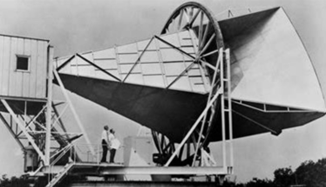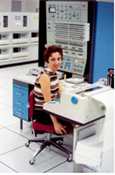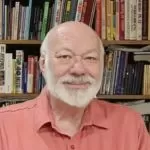Bell Labs: A Century of Innovation

[November 2024] Of course, the name came not because telephones had bells, nor because in England it was not uncommon to say “I’ll give you a bell tomorrow.” It came from the inventor, Alexander Graham Bell, who invented the telephone and led his company to organize what would become Bell Telephone Laboratories – Bell Labs.
As technology changes daily, it is easy to overlook the myriad contributions of the Bell Telephone Laboratories (BTL), Western Electric, and the rest of the Bell System.
Perhaps most prominently, the involvement of Bell Labs in developing cellular phone service (1946-1984) changed world culture. But, beyond cell phones, BTL provided the foundation of modern communication as a pre-eminent research and development organization for nearly a century.
A.G. BELL
A scientist with a strong interest in audio, Alexander Graham Bell moved beyond the telegraph to bring human voice transmission over distances.
Bell, born in Scotland, and later lived in England and then Canada, was especially concerned with helping the deaf, teaching lip reading and developing sonic methods of voice transmission. Beginning with learning to his mother by speaking via bone conduction, Bell preoccupation with his mother’s deafness led him to study acoustics, working for ways to help the hard of hearing assimilate into the “hearing world.” His interest in audio led to a multitude of patents and inventions, starting in 1875 when he demonstrated transmitting human voice over telegraph lines.
Immediate interest was shown in his invention and various companies were set up starting with the Bell Telephone Company. Various divisions soon were put into operation to manufacture the different products that Bell and his workers developed.
HEAVY ON R&D
Bell himself was key to the research and development process. Western Electric was the Bell engineering component. Quickly advancing beyond wired telephones and networks, Western Electric built the first commercial radio transmitters (early 1920s) and other high-quality broadcast and recording equipment.
Bell also partnered with his cousin, Chichester Bell, and Charles Sumner Tainter to set up the Volta Laboratory in 1880, which became part of the Bell Telephone Company. Picking up from Thomas Edison’s cylinder phonograph and, furthering research into sound reproduction, Volta pioneered the idea of grooves cut into a platter, now known as cutting a record.
Based partly on his work for Bell around 1887, German-American inventor Emil Berliner, got the patent for developing the lateral-cut flat disc. Volta Labs itself obtained 32 patents in its 23-year operation.

Bell and Tainter also experimented with the Photophone, something Bell considered his most important invention.
Transmitting voice over a beam of light, the device provided a basis for fiber optics developed a century later.
In 1896, Western Electric consolidated all engineering and manufacturing for the Bell company, and within three years, it itself became The American Telephone and Telegraph Company.
BELL LABS
One of the derivative corporations, Bell Telephone Laboratories, Inc. was organized on January 1, 1925, to consolidate the development and research activities in the communication field and allied sciences for the Bell System, which included Western Electric, among other brands.
AT&T set up Bell Laboratories in New York City to provide all research and development. However, In the early 1940s, Bell Laboratories moved to several locations in New Jersey to get away from the congestion of New York City.
THE TELEPHONE COMPANY
Actress Lily Tomlin, through her Ernestine character, may have popularized the image that the telephone company did not care because it did not have to – it was too big to be concerned.
It is true that in some cases the customer experience mirrored Tomlin’s accurate portrayal. But behind the frustration that tested the patience of customers, Bell companies endlessly sought better technology, economy, and reliability.
From hand crank telephones to dial models to the modern electronic phones, Bell Labs kept pushing forward better products with better sounding audio.
The 1920s brought the Model 200, a one-piece handset. Model 300 incorporated network circuitry in the base. In 1950, the Model 500 had a contemporary shell and improved electronics. Touch Tone Model 2500 then became the styling standard in the 1980s, starting as hard-wired and later converted to modular connection. Bell Labs also developed the first Speakerphone, and Picturephone (remember the movie 2001?).
DSL (Digital Subscriber Loop), introduced in 1980s, began to popularize Internet usage by sending simultaneous broadband and telephone signals over ordinary copper lines. (AT&T patented DSL in 1988.)
The often-heard “Press Star” instruction on business phone calls results from of Bell Labs design. Engineers spent hundreds of hours of study and testing the Touch Tone (dual tone multi-frequency) button dialing pad, developed at Bell Labs. Even the button arrangement was the product of extensive testing, as shown here.

Concurrently with the user devices, Bell Labs developed Direct Distance Dialing in the 1950s. Later came the Bell 101 Dataset Modem, audio analog/digital conversion, and of course mobile telephone systems, first in trunk-mounted phones and later hand-held cellular telephones.
Curiously, Bell considered his invention an intrusion on his real work as a scientist and refused to have a telephone in his study. His wife, Mabel, wrote: “Of course, he never had one in his study. That was where he went when he wanted to be alone with his thoughts and his work. The telephone, of course, means intrusion by the outside world.”
AUDIO IMPROVEMENTS
In the almost constant search for better amplification, BTL was constantly experimenting, and it produced the world’s first transistor in 1947.
All by itself, the transistor is considered one of the most important developments in world history. Over then following years, transistors steadily replace vacuum tubes, both for better audio amplification as well as low distortion.
With the transistor, in the 1950s AT&T Long Lines pioneered the now common point-to-point microwave radio transmission for telephony and broadcast. Often, the microwave signals incorporated a multiplexing system. Thus AT&T’s T-1 Carrier could carry 24 signals over a single copper line.

Working with other entities, AT&T introduced commercial satellite communications with Telstar in 1962.
COMPUTERS AND MORE 
By the way, if you use any *NIX derived operating system to run your computer, it came from Bell Labs.
The UNIX computer operating system came along in the mid-1960s.
Begun to improve data collection and business operations, UNIX eventually provided the basis for Apple’s iOS and all the various Linux-type systems.

The laser, now used in a multitude of applications, came from Bell Labs in 1958. And in more recent years, BTL pioneered solar energy cells.
AN INSIDER’S VIEW
A. Michael Noll worked at Bell Labs in the 1960s. He is currently professor emeritus of communication at the Annenberg School at the University of Southern California. Noll has compiled an extensive list of inventions, discoveries, and innovations from the time of BTL formation in 1925 to Divestiture in 1984.
Many items on his list are highly scientific or theoretical. According to his biography, Noll himself “pioneered digital computer art, 3D animation, and haptic (touch/motion) communication.”
- 1927: television transmission, quartz electronic clock, and transatlantic phone service.
- 1929: artificial larynx, broadband coaxial cable, and ship-to-shore radio.
- 1930: moving coil microphone.
- 1931: radio astronomy, teletypewriter exchange, and stereophonic recording on film.
- 1933: stereo sound transmission.
- 1936: stereo phonograph record.
- 1942: horn-reflector microwave antenna.
- 1947: point contact transistor.
- In the 1950s: Direct Distance Dialing, Bell 101 Dataset Modem, and audio analog/digital conversion.
- In the 1960s: The advanced MOS transistor, Echo communications satellite, light-emitting diode (LED) for optical fiber, the #1 Electronic Switching System (ESS), and magnetic bubble computer memory.
- In the 1970s: the cellular handoff system, cellular switching, C programming language, electronic blackboard, #4 ESS, video teleconferencing, modular telephone connectors, and the 32-bit microprocessor.
- And the 1980s brought among other things, the #5 ESS revolutionized telephone switching.
MANY PRACTICAL APPLICATIONS
BTL also developed practical applications – designers were always looking for better phones, switching systems, and other equipment to increase reliability and reduce cost.
The #1 Crossbar switching system (#1XB), first installed in Brooklyn in 1938, could store incoming digits. The Crossbar would “translate” the numbers and determine how to send the call. In 1948, Media, Pennsylvania got the first #5 Crossbar, the phone switch of a growing nation into the 1960s. The #5XB was also the first switch to process customer-dialed Touch Tone. The last #5 Crossbar was built in 1969.
DIVESTITURE
In 1984, a federal court-ordered dismantling of the Bell System.
The parent AT&T company retained ownership of Bell Labs and Western Electric (then known as AT&T Technologies), morphing them into Lucent. That company later merged with the French company, Alcatel, which focused on telephone support instead of including scientific R&D.
Eventually, Nokia, a Finnish multinational telecommunications company, acquired Alcatel-Lucent. The company has locations worldwide, but the global headquarters is located in Murray Hill, New Jersey, a former prominent Bell Labs site. (None of these new companies attempted to re-construct the “vertical integration” end-to-end responsibility that was a hallmark of the Bell System.)
What was left over of AT&T was purchased by SBC Communications (formerly Southwestern Bell Regional Bell Operating Company), headquartered in Dallas.
Western Electric once owned and operated radio stations in the New York City area, using the company’s own equipment. Western continued to manufacture broadcast and audio equipment until an anti-trust settlement in the 1950s limited the company to telephony.
- The AM transmitter business became Continental Electronics
- Standard Electronics got the FM products.
- Western sold its interests in other audio equipment to Westrex (disc cutting and movie sound) and Altec-Lansing (microphones, commercial sound reproduction, and loudspeakers).
R&D IS ALWAYS IMPORTANT
Noll strongly supports commercial research and development.
He wrote: “There are those who believe we should rely on research done at universities with government support. University research has its place, but its distance from the real world, the grant proposal process which discourages risk taking, and its lack of any broader mission, other than to achieve next year’s funding, make it a poor replacement for the industrial research laboratories of the past.”
Among papers and articles, Noll has published a book co-edited with Michael Geselowitz of the IEEE History Center, titled Bell Labs Memoirs: Voices of Innovation, printed by Amazon.
– – –
Dave Felice had a broadcast background and later, he worked at “the phone company,” until retiring in 2017. You can contact Dave at gelato321@aol.com
– – –
Would you like to know when more articles like this are published? It will take only 30 seconds to
click here and add your name to our secure one-time-a-week Newsletter list.
Your address is never given out to anyone.
